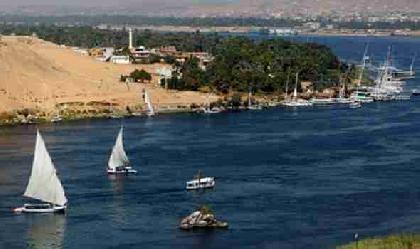 Nasr El Noba City is currently the capital of Kom ombo in Aswan Governorate. It locates eastward Kom Ombo locality and about 60km away from Aswan City. The city is renowned for the wide range of agricultural land that makes agriculture the main source of income for the city. The city encloses another smaller city called Kalabsha and other seven villages including Abo Simbel, El Maleky, El Dekka, and others. In the past, the city was a part of the Nubian country that was extending from Aswan City in Egypt till El Deba in the south of Sudan and was once a highly civilized country.
Nasr El Noba City is currently the capital of Kom ombo in Aswan Governorate. It locates eastward Kom Ombo locality and about 60km away from Aswan City. The city is renowned for the wide range of agricultural land that makes agriculture the main source of income for the city. The city encloses another smaller city called Kalabsha and other seven villages including Abo Simbel, El Maleky, El Dekka, and others. In the past, the city was a part of the Nubian country that was extending from Aswan City in Egypt till El Deba in the south of Sudan and was once a highly civilized country.
It was one of the major trade centers for being the center of gold mines in the past till the construction of the High Dam. After the construction of the dam the Nubian inhabitants of El Noba immigrated to Kom ombo and made Nasr El Noba the Capital of the City.
The name of Kom Ombo comes from the Coptic word "Umbo" and the Ancient Egyptian "Nub" which means "Gold". It is a small town and a capital of a parish serving the agricultural villages around it. In Ptolemaic and Roman times, Kom Ombo was a station for elephants caravan imported from Africa to be used in armies and was also a station on the road to the desert's gold mines and caravan routes to the western oases and Sudan. The reason behind the prominent of the city currently is the existence of prominent tourist attractions which are Sobek and Haroris Temples.
These are widely visited monuments in Aswan and this makes tourism the main economic resources of the city. There are some other resources such as services, administration, and the sugar industry. The majority of the inhabitants are Egyptians but some of them are Nubians.
Temple of Sobek and Haroris
The Temple of Sobek and Haroris (or the Temple of Kom Ombo), now almost destroyed, lies on a small hill with wonderful views over the Nile surrounded by sugar cane and maize fields. The temple was built during the Ptolemaic Period and has some additions that date back to the roman period. It is the only temple in Egypt dedicated to two gods and thus has two axes. The right side of the temple was dedicated to Sobek, the crocodile god, and the left side was dedicated to Horus the Elder or Haroris.
The earthquakes almost destroyed the temple and the floods of the Nile swallowed parts of the temple's first pylon. To the right of the entrance of the temple, there is a small chamber with mummified crocodiles, and to the right of the temple, there is a well that was used by the priests to raise crocodiles, representing the life-image of Sobek. In the Second Hypostyle Hall of the temple, there is a scene of the Calendar of Feast of the temple, with representations of the Egyptian numbers. In the place of the Sanctuary of the Temple of Sobek and Haroris, there still remains two altars of black granite and in the underground, there were tunnels that, may be, were used by priests to utter oracles and statements in the name of gods. Around the Sanctuary, there are small unfinished rooms that were used as storerooms for the objects and materials necessary for ritual purposes. Behind these chambers, there is a representation of Imhotep as god of medicine, represented with his surgical instruments.
